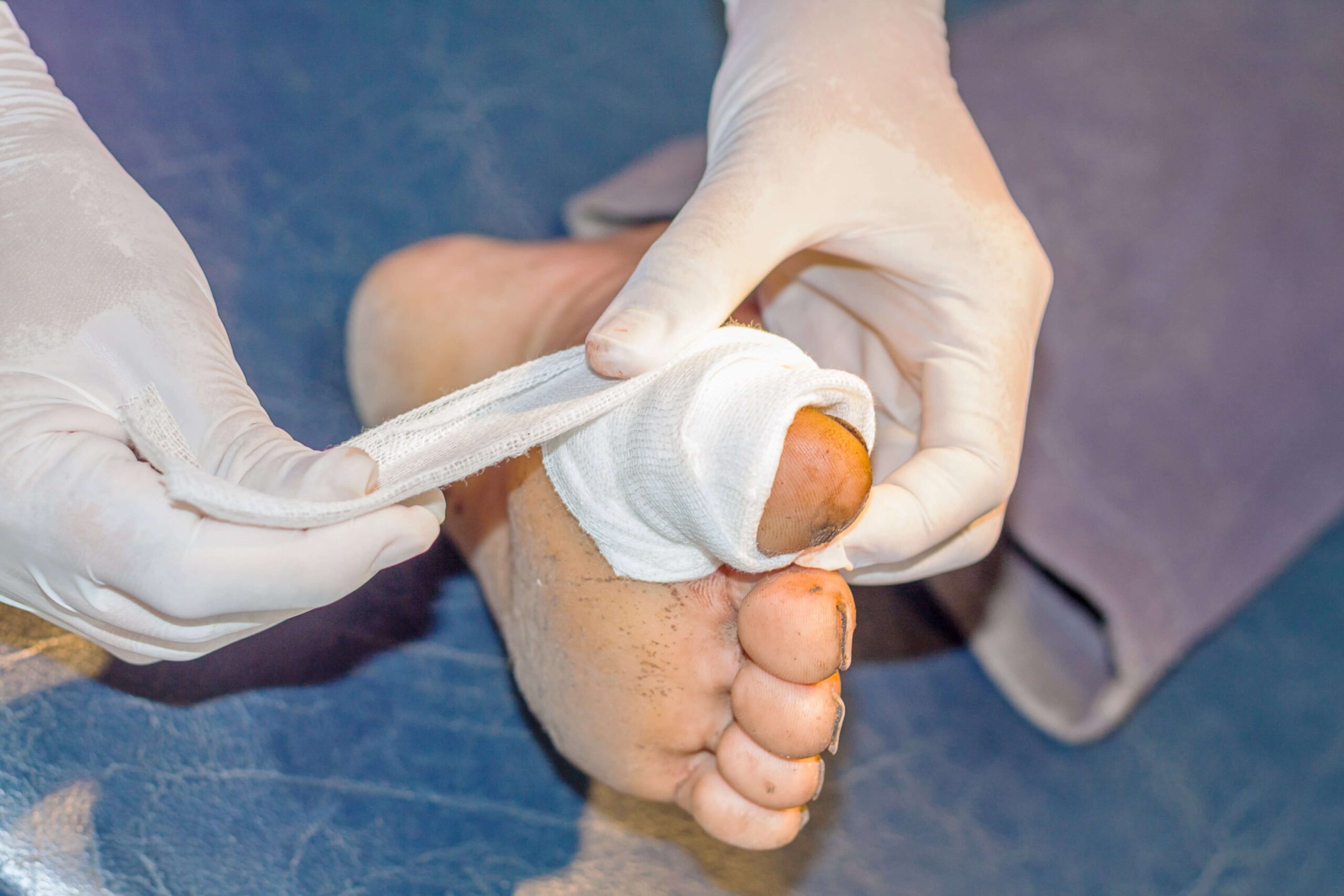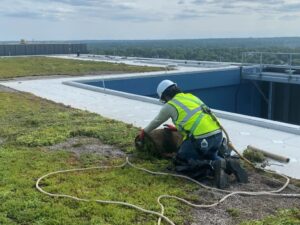Living with diabetes comes with many challenges, and one of the most serious is the risk of developing non-healing foot wounds. These wounds can lead to dangerous complications, including infections, hospitalization, and even amputations if left untreated. Fortunately, advancements in orthopedic care now provide patients with targeted solutions to manage these wounds and regain mobility.
Orthopedic treatment for non-healing foot wounds in diabetes plays a crucial role in managing both the underlying causes and the symptoms, offering hope for recovery and improved quality of life.
What Are Non-Healing Foot Wounds in Diabetes?
Non-healing foot wounds, often referred to as diabetic foot ulcers, are open sores or wounds that fail to heal within the expected time frame. These are especially common in people with diabetes due to complications such as poor circulation, nerve damage (neuropathy), and weakened immune response.
Such wounds frequently develop on the bottom of the foot and are prone to infection because the body’s natural healing mechanisms are compromised. If not addressed properly, these ulcers can deepen and affect bones and tendons, leading to severe complications.
Signs of non-healing diabetic foot wounds may include:
- Persistent redness or swelling
- Drainage or pus from the wound
- Foul odor
- Pain (though some patients with neuropathy may not feel it)
- Black tissue (a sign of necrosis or gangrene)
Why Diabetes Complicates Wound Healing
Diabetes interferes with the body’s ability to fight infections and heal wounds. Elevated blood sugar levels impair white blood cell function, which is essential for fighting bacteria and healing tissue. Additionally, poor circulation in the lower limbs reduces oxygen and nutrient delivery, making recovery slower and more difficult.
Peripheral neuropathy, another common diabetes complication, causes loss of sensation in the feet. This often leads to unnoticed injuries or pressure points, which can turn into ulcers over time. By the time a patient notices a wound, it may already be infected or severely damaged.
Without proper orthopedic intervention, these wounds can quickly deteriorate and increase the risk of limb-threatening conditions.
The Role of Orthopedic Specialists in Diabetic Wound Care
Orthopedic specialists bring a unique and essential perspective to diabetic wound care. They focus not only on treating the wound but also on addressing biomechanical issues, preventing further injury, and restoring mobility.
Orthopedic professionals work in tandem with endocrinologists, podiatrists, wound care specialists, and physical therapists to ensure holistic care. Their role is especially vital when the wound is related to foot deformities, bone infections, or pressure imbalances caused by poor foot alignment.
With orthopedic treatment for non-healing foot wounds in diabetes, patients receive targeted interventions that go beyond surface-level care, ultimately supporting long-term recovery and foot preservation.
Orthopedic Treatment Approaches for Non-Healing Foot Wounds
Wound Debridement and Infection Management: Effective orthopedic treatment begins with debridement, the process of removing dead or infected tissue from the wound. This encourages healthy tissue regeneration and prevents the spread of infection.
Orthopedic teams also manage infections through culture-based antibiotic therapy and, when necessary, surgical drainage. Treating bone infections like osteomyelitis may involve surgery to remove infected bone and prevent further deterioration.
Offloading Techniques and Pressure Relief: One of the leading causes of non-healing diabetic wounds is repeated pressure on the same area of the foot. Orthopedic specialists implement offloading strategies to redistribute weight and reduce pressure on the wound.
This may include:
- Custom orthopedic shoes or insoles
- Total contact casting (TCC)
- Walking braces or boots
- Wheelchairs or crutches during severe wound phases
By reducing pressure on the ulcer, these methods accelerate healing and protect against recurrence.
Surgical Interventions When Necessary: When conservative treatments fail, surgical procedures may be required. Orthopedic surgeons can correct structural deformities like hammertoes or Charcot foot, which contribute to abnormal pressure points.
In severe cases, partial foot or toe amputations may be performed to control infection and preserve as much function as possible. These surgeries aim to stabilize the foot and prevent future ulcers.
Advanced Therapies: Modern orthopedic treatment also includes advanced wound care techniques such as:
- Skin grafts or bioengineered tissue substitutes
- Negative pressure wound therapy (NPWT)
- Platelet-rich plasma (PRP) injections
- Hyperbaric oxygen therapy (in collaboration with wound care centers)
These therapies promote tissue regeneration, enhance blood flow, and support faster wound closure.
Benefits of Orthopedic Care for Diabetic Patients with Foot Wounds
Choosing orthopedic treatment for non-healing foot wounds in diabetes offers several long-term benefits:
- Accelerated Healing: Orthopedic strategies, such as proper offloading and surgical correction, promote quicker wound closure.
- Infection Prevention: Early orthopedic intervention reduces the risk of deep infections and bone involvement.
- Improved Mobility: Addressing biomechanical issues helps patients walk with less pain and avoid future wounds.
- Amputation Risk Reduction: Timely orthopedic care can prevent severe complications that might otherwise lead to limb loss.
- Personalized Care: Orthopedic teams develop individualized treatment plans tailored to the patient’s condition and lifestyle.
What to Expect During Orthopedic Treatment at Tec Orthopedics
At Tec Orthopedics, patients receive a comprehensive evaluation that includes a physical exam, imaging studies (such as X-rays or MRI), and wound assessments. From there, the orthopedic team designs a personalized treatment plan to address both the wound and any contributing structural or mechanical issues.
Treatment typically involves:
- Debridement and wound cleaning
- Infection control and monitoring
- Footwear and pressure management solutions
- Surgical consultation if needed
- Regular follow-up to track progress
This multi-disciplinary approach ensures that healing is consistent, complications are avoided, and mobility is preserved.
Tips for Diabetic Patients to Prevent Non-Healing Foot Wounds
While orthopedic treatment is crucial for recovery, prevention is always the best strategy. Diabetic patients should follow these foot care tips:
- Inspect feet daily for blisters, cuts, or color changes.
- Keep feet clean and dry, especially between the toes.
- Moisturize dry skin (but avoid between toes to prevent fungal infections).
- Trim toenails carefully, or have a professional do it.
- Avoid walking barefoot, even at home.
- Wear properly fitted shoes designed for diabetic foot support.
- Control blood sugar levels to improve healing capacity.
- Visit an orthopedic doctor or podiatrist for any signs of a wound or foot deformity.
Early intervention makes a significant difference in outcomes, and even minor wounds should be evaluated promptly.
Takeaway
Orthopedic treatment for non-healing foot wounds in diabetes is not just about healing a sore — it’s about restoring a patient’s independence, mobility, and overall quality of life. By addressing the root causes of delayed wound healing and employing specialized interventions, orthopedic care helps patients avoid serious complications and live more comfortably.
Tec Orthopedics offers a compassionate, expert-driven approach to managing diabetic foot wounds. If you or a loved one is struggling with a persistent foot ulcer, don’t wait until the problem worsens. Take the first step toward healing by scheduling a consultation with our orthopedic specialists today.




